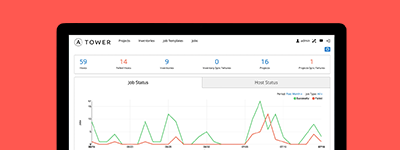ec2_eni - Create and optionally attach an Elastic Network Interface (ENI) to an instance
New in version 2.0.
Synopsis
Create and optionally attach an Elastic Network Interface (ENI) to an instance. If an ENI ID is provided, an attempt is made to update the existing ENI. By passing ‘None’ as the instance_id, an ENI can be detached from an instance.
Requirements (on host that executes module)
- python >= 2.6
- boto
Options
| parameter | required | default | choices | comments |
|---|---|---|---|---|
| aws_access_key |
no | AWS access key. If not set then the value of the AWS_ACCESS_KEY_ID, AWS_ACCESS_KEY or EC2_ACCESS_KEY environment variable is used. aliases: ec2_access_key, access_key | ||
| aws_secret_key |
no | AWS secret key. If not set then the value of the AWS_SECRET_ACCESS_KEY, AWS_SECRET_KEY, or EC2_SECRET_KEY environment variable is used. aliases: ec2_secret_key, secret_key | ||
| delete_on_termination |
no | Delete the interface when the instance it is attached to is terminated. You can only specify this flag when the interface is being modified, not on creation. | ||
| description |
no | Optional description of the ENI. | ||
| device_index |
no | The index of the device for the network interface attachment on the instance. | ||
| ec2_url |
no | Url to use to connect to EC2 or your Eucalyptus cloud (by default the module will use EC2 endpoints). Ignored for modules where region is required. Must be specified for all other modules if region is not used. If not set then the value of the EC2_URL environment variable, if any, is used. | ||
| eni_id |
no | The ID of the ENI | ||
| force_detach |
no | Force detachment of the interface. This applies either when explicitly detaching the interface by setting instance_id to None or when deleting an interface with state=absent. | ||
| instance_id |
no | Instance ID that you wish to attach ENI to. To detach an ENI from an instance, use 'None'. | ||
| private_ip_address |
no | Private IP address. | ||
| profile (added in 1.6) |
no | uses a boto profile. Only works with boto >= 2.24.0 | ||
| region |
no | The AWS region to use. If not specified then the value of the AWS_REGION or EC2_REGION environment variable, if any, is used. See http://docs.aws.amazon.com/general/latest/gr/rande.html#ec2_region aliases: aws_region, ec2_region | ||
| security_groups |
no | List of security groups associated with the interface. Only used when state=present. | ||
| security_token (added in 1.6) |
no | AWS STS security token. If not set then the value of the AWS_SECURITY_TOKEN or EC2_SECURITY_TOKEN environment variable is used. aliases: access_token | ||
| source_dest_check |
no | By default, interfaces perform source/destination checks. NAT instances however need this check to be disabled. You can only specify this flag when the interface is being modified, not on creation. | ||
| state |
no | present |
|
Create or delete ENI. |
| subnet_id |
yes | ID of subnet in which to create the ENI. Only required when state=present. | ||
| validate_certs (added in 1.5) |
no | yes |
|
When set to "no", SSL certificates will not be validated for boto versions >= 2.6.0. |
Examples
# Note: These examples do not set authentication details, see the AWS Guide for details. # Create an ENI. As no security group is defined, ENI will be created in default security group - ec2_eni: private_ip_address: 172.31.0.20 subnet_id: subnet-xxxxxxxx state: present # Create an ENI and attach it to an instance - ec2_eni: instance_id: i-xxxxxxx device_index: 1 private_ip_address: 172.31.0.20 subnet_id: subnet-xxxxxxxx state: present # Destroy an ENI, detaching it from any instance if necessary - ec2_eni: eni_id: eni-xxxxxxx force_detach: yes state: absent # Update an ENI - ec2_eni: eni_id: eni-xxxxxxx description: "My new description" state: present # Detach an ENI from an instance - ec2_eni: eni_id: eni-xxxxxxx instance_id: None state: present ### Delete an interface on termination # First create the interface - ec2_eni: instance_id: i-xxxxxxx device_index: 1 private_ip_address: 172.31.0.20 subnet_id: subnet-xxxxxxxx state: present register: eni # Modify the interface to enable the delete_on_terminaton flag - ec2_eni: eni_id: {{ "eni.interface.id" }} delete_on_termination: true
Notes
Note
If parameters are not set within the module, the following environment variables can be used in decreasing order of precedence AWS_URL or EC2_URL, AWS_ACCESS_KEY_ID or AWS_ACCESS_KEY or EC2_ACCESS_KEY, AWS_SECRET_ACCESS_KEY or AWS_SECRET_KEY or EC2_SECRET_KEY, AWS_SECURITY_TOKEN or EC2_SECURITY_TOKEN, AWS_REGION or EC2_REGION
Note
Ansible uses the boto configuration file (typically ~/.boto) if no credentials are provided. See http://boto.readthedocs.org/en/latest/boto_config_tut.html
Note
AWS_REGION or EC2_REGION can be typically be used to specify the AWS region, when required, but this can also be configured in the boto config file
This is an Extras Module
For more information on what this means please read Extras Modules
For help in developing on modules, should you be so inclined, please read Community Information & Contributing, Helping Testing PRs and Developing Modules.


